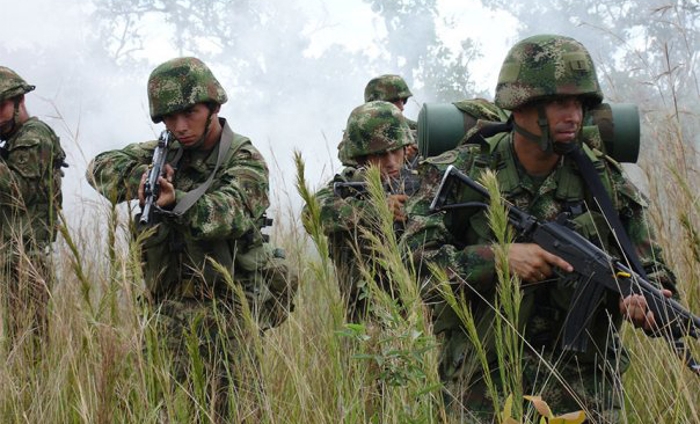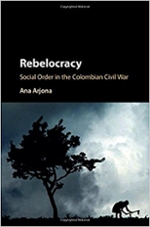Creating Order During Civil War
IPR associate’s new book challenges conception of wartime chaos
Get all our news
We need rules that work for people to function as a society.”
Ana Arjona
Assistant professor of political science and an IPR associate

A November 2016 peace deal brought Colombia's 40-year civil war to an end.
“Civil war” usually conjures up images of “anarchy and a collapse of order,” according to political scientist and IPR associate Ana Arjona. But are civil wars always chaotic? According to Arjona’s new book, Rebelocracy: Social Order in the Colombian Civil War (Cambridge University Press, 2016), not necessarily.

From her analysis, Arjona constructs a theory in which wartime social order varies according to how much uncertainty civilians face in their daily life, and how much influence non-state armed groups have in the affairs of the community. Drawing on years of fieldwork from Colombia, where she is from, Arjona traces the nuances of the country’s 40-year civil war, which came to a close in 2016 when Colombia's president, Juan Manuel Santos, brokered a ceasefire with FARC, the largest armed rebel group in the country. Arjona combines detailed quantitative and qualitative data to understand what creates order or chaos in different communities at different times.
“Sometimes these groups regulate everything from how people dress to sexual behavior to political behavior,” she explained. “And sometimes they act more like minimal rulers.”
Central to Arjona’s theoretical framework is a distinction between “rebelocracy”—or a situation where a non-state armed group regulates many aspects of local life—and “aliocracy”—when the armed group has a more limited scope of rule.
She points out that while “armed groups would prefer to rule in a comprehensive way,” they cannot unilaterally institute a “rebelocracy.”
Instead, civilian-combatant relationships are central in determining wartime social order. Arjona shows how civilians in a given community can shape how much an armed group can intervene to regulate civilian conduct. In communities with legitimate and effective pre-existing local institutions, civilians can engage in collective action to resist and negotiate and limit the armed group’s scope of rule.
In Rebelocracy, she argues that understanding this give-and-take between combatants and civilians has policy implications that extend beyond Colombia. While outside actors, such as governments and nonprofits, often focus on providing civilians with material goods during civil war, she says strengthening local institutions is also important to shield locals from armed groups.
“We are forgetting the importance of these institutions that are the foundation of social order,” she said. “We need rules that work for people to function as a society.”
By identifying the actors, relationships, and institutions that bring about wartime social order, Arjona’s book fundamentally challenges the portrait of civil war as violent and chaotic.
“We usually focus on violence,” she said. “But there are all these other things happening during war that aren’t necessarily violent and that also shape people and communities.”
Ana Arjona is an assistant professor of political science and an IPR associate.
Photo credit: Flickr.
Published: May 1, 2017.